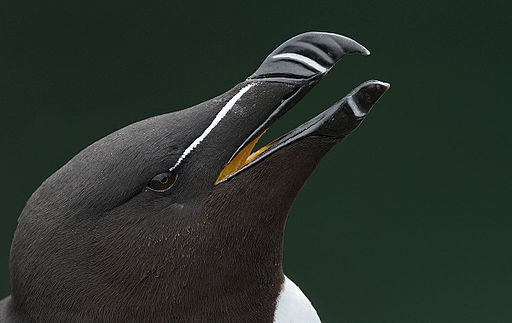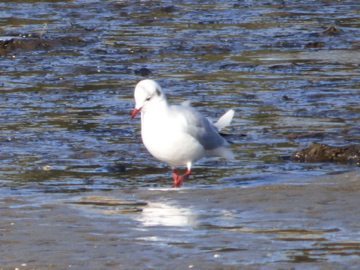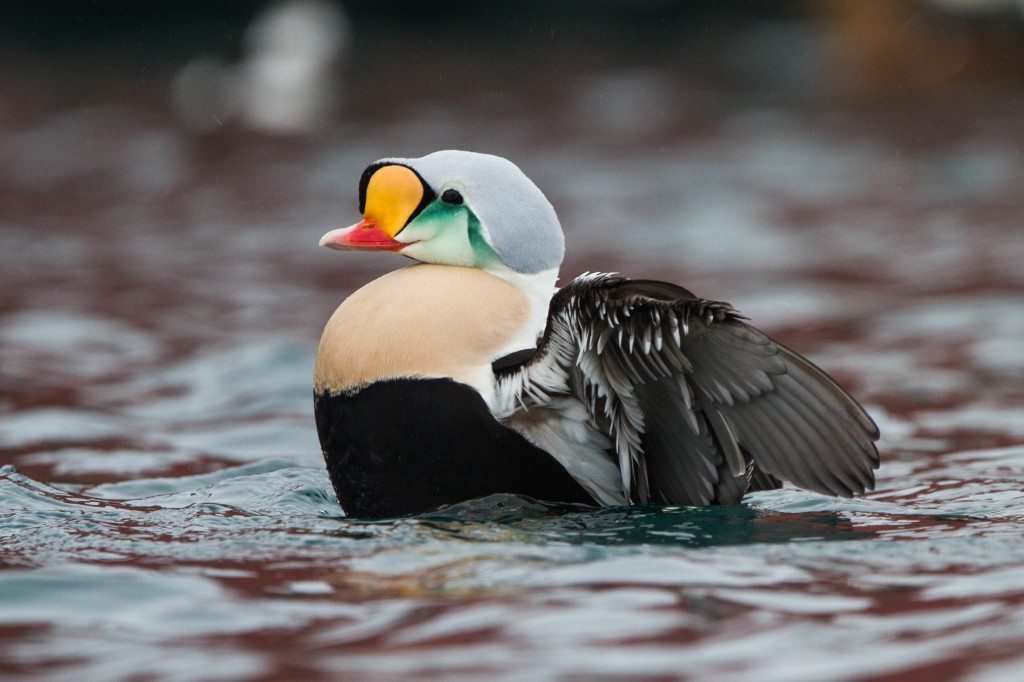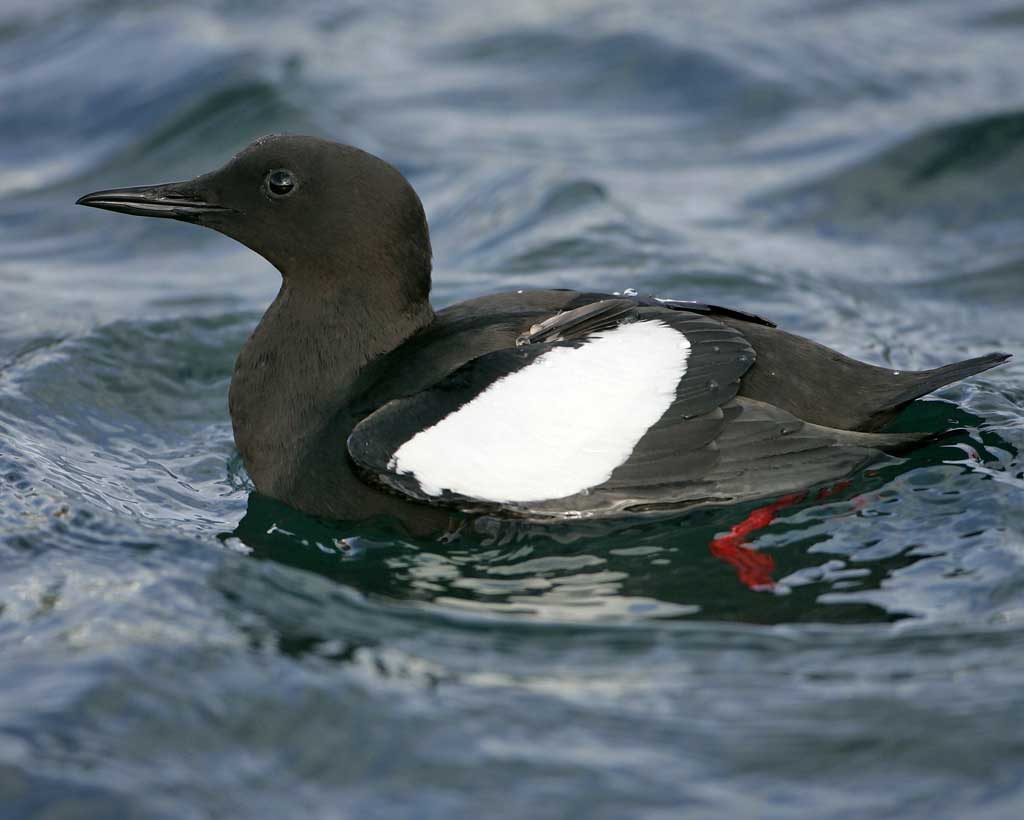Lani’s Big Year hits Boston
Note: This is the second in a series of occasional blog posts by GGBA member George Peyton about his other half Lani Rumbaoa’s effort to see over 600 bird species in the Lower 48 states in 2015.
By George Peyton
We flew to Boston on January 21 intending to look for wintering birds from the far north that would be difficult to see in other areas during Lani’s Big Year. As soon as we arrived in Boston around 9 p.m., we started hearing about a major snowstorm headed there, so that was always on our minds as we birded for the next four days. Not wanting to drive in snowy and icy conditions, we had fortunately arranged for local Boston area birders to take us out in their cars.
At 6 a.m. the next morning we were met by Wayne Petersen, a senior staff member at Massachusetts Audubon Society, driving his Prius. (In fact, all three of our bird leaders in Boston drove a Prius. California is not the only state with the conservation ethic.) Wayne is not only an exceptional birder and guide, but somewhat of a legend in the Massachusetts birders’ world. He is in charge of the Important Bird Areas Program in that state and other major tasks, including recently managing 600 contributors to the Breeding Bird Atlas for Massachusetts as its Chief Editor. In addition to having led many international bird tours for Mass Audubon (he has just left for Tanzania), he was a bird guide for Field Guides Bird Tour Company for over 20 years.
All of this background showed in our day birding together. First, Wayne found three separate Snowy Owls for Lani while birding on Plum Island, perhaps the most famous birding location in eastern Massachusetts. This was a life bird for Lani, and absolutely gorgeous birds. In all, Wayne found 17 new Year Birds for Lani that day, including species not found in California like Razorbill and Black Guillemot. We were fortunate with cold clear weather all day.

While seeing birds is the priority in a day out birding, food is also important. Wayne introduced us to Bob’s Lobster for lunch, a favorite hangout for birders on Plum Island with delicious lobster rolls, and we finished off with excellent locally-made ice cream. As we drove back to Boston after dark, Wayne stopped at Prince Pizza north of Boston, a popular spot for birders to congregate for pizza and draft beer after a long day of birding.

The following day we birded with another Mass Audubon staff member, Vin Zollo, a very experienced birder, who met us at 6 a.m. and drove us down to Cape Cod to see a series of special birds that he had staked out for us. The first was a gorgeous adult male King Eider swimming in a flock of about 300 Common Eiders at reasonably close range.
After locating a Tufted Duck in a flock of 250 Greater Scaup — like finding a needle in a haystack — Vin took us to a beach where we saw a Black-headed Gull, which Lani and I had both seen in Europe (but never in the U.S.) at very close range. Later we were fortunate in finding a flock of Purple Sandpipers. While we were birding, Vin told us about his work in habitat preservation/restoration at Moose Hill Sanctuary, at over 2,000 acres the largest sanctuary owned by Mass Audubon, which they have managed for over 100 years.


The third day of our visit was a day off from birding, since it snowed much of the day, but at 7 a.m. on Sunday, January 25, we were met by Bob Stymeist in his bright red Prius. He drove us through the snowy streets to the heart of downtown Boston on the waterfront, where he pulled out a bag of bread crumbs and threw them on the water. In less than two minutes a beautiful adult Lesser Black-backed Gull flew to the railing about ten feet away.
What amazed both Lani and me was as the day went on was how Bob confidently drove his Prius through snow off and on the roads without chains or snow tires, obviously from years of experience driving in winter conditions. Incidentally, Bob Stymeist is famous around Boston for knowing exactly where all of the rare and vagrant birds can be found, as well as being a member of the Massachusetts Rare Bird Committee and the compiler of the Greater Boston Christmas Bird Count.
After finding Lani her first Wood Ducks of the year, he drove us to Forest Hill Cemetery, where a Black-backed Woodpecker had been hanging around and normally could be seen fairly easily. We found the gates locked indefinitely due to snow, a real disappointment.
This leads to an important lesson that Lani has been learning since her Big Year began: namely that birds do not always cooperate, even when they have been regularly and sometimes easily seen beforehand. So patience and perseverance will be key to finding certain Target Birds that Lani needs to reach her goal of 600 bird species in 2015.

Our biggest disappointment that day was when Bob checked his smart phone and found that a special rare bird had just been seen in New Hampshire, north of the Massachusetts border. We drove like crazy north from central Boston and, following the instructions on the bird posting, finally reached the Fishermen’s Cooperative. We pulled into the parking lot, crowded with birders, and found that the Gyrfalcon — that very large and impressive raptor from the Arctic — had flown away barely a minute before we arrived after sitting in one spot for well over an hour eating a gull. Despite substantial searching, we were unable to find it. The next day it was photographed from that very same parking lot.
Lani had the same frustrating experience on January 1, when we searched for California Gnatcatchers for hours at six northern San Diego County sites where they are regularly found, but did not see or hear a single one. Unfortunately, disappointment is part of conducting a Big Year of birding.
All of the time that Lani was birding around the greater Boston area, predictions of that oncoming snowstorm increasingly grew into predictions of a huge blizzard. We worried that our United flight home at 10:41 a.m. on January 26 would be cancelled. When we arrived at Logan Airport, we nervously checked the departure board… and sighed with relief to find that our plane was flying as scheduled, but that all United flights after noon were cancelled. How lucky could we be!

Our three long days of birding in Massachusetts — averaging over 12 hours each – brought Lani’s Big Year list to a total of 231 species. With a day trip to the South San Francisco Bay on February 1, she is now up to 236 species. Not bad for about a month of birding.
On now to South Texas for several weeks of birding during February — looking for Whooping Cranes from a boat, visiting the King Ranch for a day with an experienced birder, and birding along the Lower Rio Grande Valley looking for many special bird species.
——————————————
George Peyton practiced law for 44 years, dividing his time between a private practice and work as Piedmont City Attorney. He has served on the boards of Golden Gate Bird Alliance, Point Blue (formerly PRBO), Audubon Canyon Ranch, and National Audubon. He played a leading role in National Audubon’s work to save Mono Lake. He has been an active birder for 66 years and seen about 6,500 bird species. Click here to read his previous blog post about Lani”s big year.
